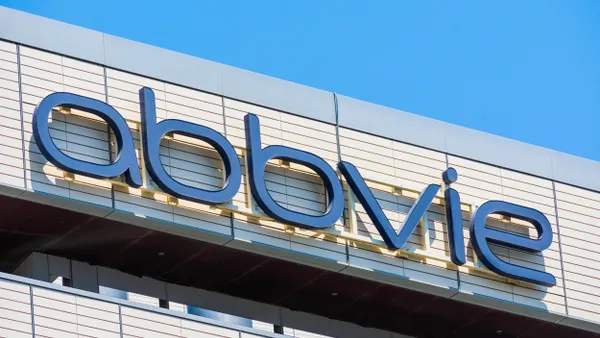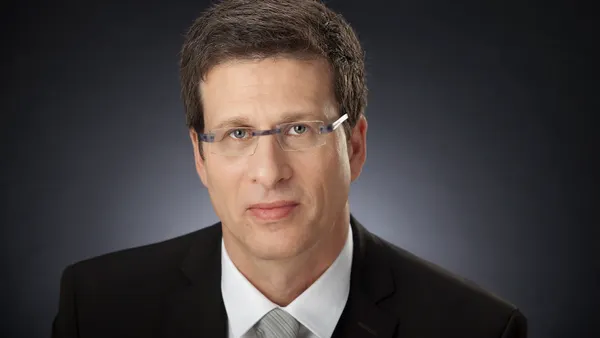38 J u l y 20 03 PharmaVOICE TWASALLABOUTMONEY. That’s how Bruce I. Diamond, Ph.D., describes how he, a distinguished professor and clinical researcher, ended up in prison for theft and misrepresentation. Dr. Diamond, a pharmacologist, is a former professor with the department of psychiatry and former director of the neuropsychophar macology laboratory at the Medical College of Georgia (MCG). During his career, Dr. Diamond received numerous awards and honors, and he published more than 80 book chapters and arti cles related to the central nervous system. He was a highly regarded inves tigator who was trusted by pharma companies for the highquality studies he and his partner conducted for the treatment of schizophrenia, Alzheimer’s disease, depression, and other CNS disorders. But it was the lure of money that led Dr. Diamond to breach the stan dards of good clinical practice and to misappropriate funds. Dr. Diamond and his research partner, Richard Borison, M.D., used research funding that should have gone to the MCG and the Veterans Administration (VA) to set up their own private research organization. Dr. Diamond’s ethical breach cost him five years in prison. He was fined and ordered to pay more than $1 million in restitution to the college. In addition, all of his other assets were seized. Furthermore, the longterm consequences are farreaching since he can no longer participate in drug research as a principal investigator or subinvestigator. In addition, he can not receive investigational drugs or participate in certain other activities. The investigators’ deception, however, cost the pharmaceutical industry and all those who conduct trials a lot more. The media attention surround ing the case raised doubts about the clinicaltrial process. There was concern about possible harm done to patients, although Dr. Diamond stresses that he and Dr. Borison did not risk the health of patients. Still, former research GREED In a cautionary tale about how money can corrupt, two clinical investigators allowed the lines between business and research to blur. The LE$$ON$ of IN AN EXCLUSIVE INTERVIEW WITH PHARMAVOICE, BRUCE DIAMOND,PH.D., TALKS ABOUTWHAT LED HIMTO SET ASIDE HIS PRINCIPLES AND ABANDON HIS CODE OF ETHICS. VIEW on ethics subjects and their families filed lawsuits against the pair after they went to prison; three of four suits have been dismissed. “What we did was not research miscon duct,” he says. “We were ethical when it came to treating patients fairly. If a patient wasn’t doing well, he or she was dropped from the study. We had no problem with that because we knew that there would always be another study. We knew we were good and we would get another study so we weren’t going to put a patient’s safety at risk.” What Went Wrong? Dr. Diamond moved to Augusta, Ga., in 1981 with Dr. Borison to begin research at the MCG. He was tenured in 1986 and became a professor in 1989. Although paid by the MCG, he and Dr. Borison were located in an office at a VA hos pital in Augusta. At that time, all research funds went to the MCG. Dr. Diamond says officials at the VA, however, wanted a portion of the contract money since its facilities were being used. He and Dr. Borison helped to set up a nonprofit corporation that allowed the VA to share in the research funds. The VA also lowered the overhead it charged the two researchers, mak ing it attractive for the investigators to con tinue to work at the facility. “That led to us to think — and it was wrong thinking — that if we could do this for the VA, we could set up our own private com pany to do the same thing faster and better,” Dr. Diamond says. Consequently, they used PharmEd Inc. — a company previously formed by Dr. Borison — and formed other companies, Dr. Diamond says, to be more competitive and to have more control over hiring. Through PharmEd, the investigators could use commercial IRBs and get protocol approval much more quickly. This, he says, put their research facilities on par with those of other private investigators. The MCG and the VA had their own IRB, which only met monthly. Eventually, however, Dr. Diamond and Dr. Borison began diverting research fees from sponsors that should have gone to the MCG or the VA to their own company. From 1989 to 1996, Dr. Diamond and Dr. Borison defraud ed the MCG of more than $10 million in clin icalresearch funds. “We put a lot of the money into our own company,” Dr. Diamond says. “We had so much money that we couldn’t even spend it.” To cover the fraud, the doctors fostered the appearance that the studies were conducted through the medical college or the VA, using employees of the MCG and PharmEd. It was June 1996 when MCG confronted the investiga tors. “The rules of the medical college said if a person was a fulltime employee he or she couldn’t compete with the medical college,” he says. “All the research money should have gone to the college or the VA. Still, I don’t think the conse quences of what happened, though, are truly representative of what we did.” Dr. Borison and Dr. Dia mond both were indicted by the state of Georgia in February 1997. The indictment against Dr. Diamond contained 172 counts. There were 82 counts of theft by taking and 11 counts of theft of services, which includ ed his own services. Dr. Diamond pleaded guilty to 53 of those counts and served five years in a state prison. He was released in February. Dr. Borison pleaded guilty in October 1998 to 36 counts of a 113count indict ment. He is serving 15 years. There was a lot of pressure, he says, from the sponsors to get studies done faster. “I’m not going to put the blame all on us; I think it has to go all around. But I have to admit that at the end when we got so big, we were just try ing to get things done, and we were hiring too many people too fast.” Looking back, Dr. Diamond says, they shouldn’t have tried to do so many studies. “But that was our fulltime business at the time,” he says. “I think there is a fine line between business and research and it is very hard to separate the two.” Research in Doubt Because of his experience, Dr. Diamond says, the ethics of various research practices have been called into question. For instance, sponsors’ financial incentives to investigators and coordinator bonuses can be perceived as a way to push subject enrollment, he says. Dr. Diamond suggests that the current sys tem needs some finetuning to address issues that compromise the clinicaltrials process — a process that can allow investigators to com mit fraud and go undetected for many years. He recently spoke at a meeting of the Asso ciation of Clinical Research Professionals about his experiences, which have led Dr. Dia mond to suggest some changes to the system: . National certification: Investigators and coordinators should be certified so they demonstrate a minimal level of knowledge and skills. . Improvements to informed consent: A universal minimum standard should be put in place for multicenter clinical trials that can consist of a sponsor and IRBapproved video that gives every patient across the country the same information in the same manner. Dr. Dia mond says this can supplement the current process. “The end of the video would give details on what the individual sites usually do.” . Improvements to the IRB system: “Right now, one IRB may require the doctor do the consent,” Dr. Diamond says. “But another IRB may allow the coordinator to do the consent.” IRBs, he says, need to change how they audit sites. “IRBs don’t go to sites to audit them,” Dr. Diamond says. “All the IRBs look at is paperwork. Sites can put on paper any thing they want. Even now five years later, I don’t see that anything has changed. Maybe there is more paperwork and more regulations, but nothing has changed.” F PharmaVoice welcomes comments about this article.Email us at [email protected]. with; I began to feel bad. After a while, people who do things like this think what they are doing is right. At the time, I felt as if we were doing everything right. 39 PharmaVOICE J u l y 20 03
An article from


The Lessons of Greed
Filed Under:
Research & Development







